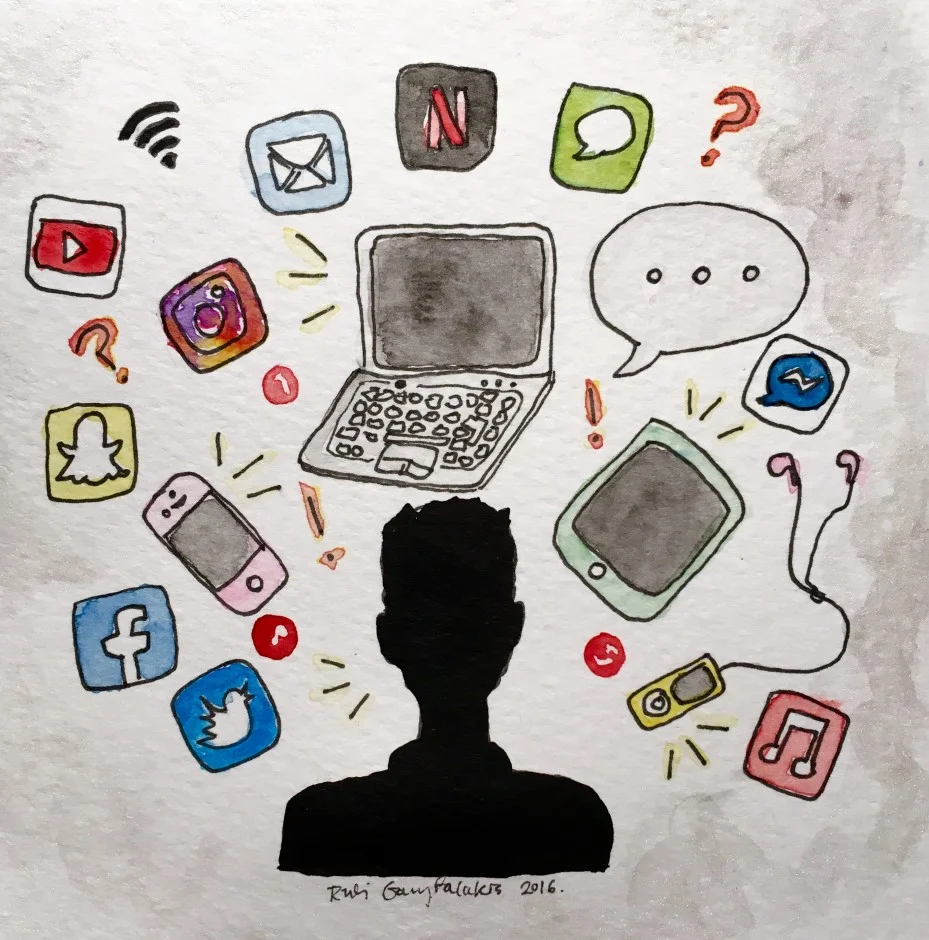Today more than ever, teens are constantly exposed to media. This includes the images and ads on billboards and in magazines that older generations were met with, but today’s children and teens are also exposed to ads on websites and in apps – these are even specifically targeted for them based on their online activities or interests. Media is interactive and responsive – Netflix makes personalized recommendations, online shopping sites suggest similar items, and teens can like, comment, send, react, and curate what they see on multiple platforms. They can connect with friends and family, but there is also the possibility of connecting with strangers. The world is more virtually connected and accessible than ever before. While this offers many opportunities, it also raises questions about safety, the nature of relationships, sexuality, maturity, peer pressure, decision making, body image… the list is extensive.
Although teens may look and at times act mature, they are still vulnerable. Adolescence is a time of rapid brain development comparable to infancy. We know from neuroscience that the human brain continues to develop well into young adulthood (www.aacap.org). While the amygdala (the part of the brain responsible for immediate reactions such as fear and aggression) develops early in life, the frontal cortex that controls reasoning and allows us to think before acting develops later and continues to change and mature throughout adolescence. This means that teens’ actions are guided more by the amygdala than the frontal cortex – they tend to make decisions or solve problems based on emotional reactions rather than logical thoughts. This is why teens sometimes struggle to think before they act or have a hard time considering the consequences of their actions. They are more likely to act on impulse, engage in risky behaviours, get into fights or accidents, and misinterpret social cues.
Considering the characteristics of the adolescent brain in connection to the current media landscape, teens may benefit from some support in making safe and positive choices both on and offline. While it may seem logical to respond with rules and restrictions, at Art as Therapy we believe in empowering teens to make their own positive decisions. The good news about the rapidly changing teenage brain is that it’s a work in progress. Although it may not always feel like it, parents have significant influence on teens’ decisions. Rather than making the choices for teens, the goal is empower them to learn how to critically engage with the images and messages that they receive, and to make good choices for themselves. If we can support teens to develop discernment and to feel confident in voicing their opinions or respecting their boundaries, this will serve them well as they become increasingly independent and are given more responsibility. Teens make some important choices during their high school and college years. If they are able to think critically about what they see and hear, they can make decisions about how they want to use and engage with media.
In our work at Art as Therapy, our goal is to approach every situation with curiosity, and to empower our clients to decide how they want to engage/ respond/ proceed. We believe that our clients have inner strength and the ability to face challenges. When someone else believes in you, it shows that you are worth believing in. Eventually this can become internalized and you can begin to believe in yourself. If something doesn’t go well, it provides an opportunity to explore what happened, to be really curious about how our client was feeling and what influenced the situation. As we bring non-judgemental curiosity, it opens up creative space where the client can gain insight and make connections between emotions and actions. This is the space where emotions can be validated and other actions can be considered. Another critical aspect of Art as Therapy’s approach is to meet the client where they are at. We believe that our clients are the experts on their lives and their emotions. The modality of art therapy allows for exploration and connection through metaphor. If a client relates to a movie character or is into a specific video game, this is where we start. Just like making and talking about artwork allows for separation from the problem which creates safety, talking about movie characters can work the same way. Whenever possible, we want to speak our client’s language.
Although the dynamic between an art therapist and a teenage client is different from a parent-teen relationship, many of the same ideas can be applied and parents can actively empower their teens to make positive choices. Here are a few tips on how you can empower your teen to develop discernment in a media-driven culture:
- Spend time together engaging with media. Learn about their world and the apps/ programs/ platforms that are meaningful to them. Let them teach you how to use snapchat filters. Watch movies or tv shows together. If you spend time exploring media together, it offers an opportunity to connect and to build your relationship. It also allows you to become aware of the dangers inherent through different social media platforms and provides an opportunity to teach your teen about online safety.
- Use media as a starting point for conversation. Movies are a great way to talk to your teen about substance use, peer pressure, sexuality, or relationships. You can talk about the scenarios and characters in the movie which helps the conversation to feel more comfortable. You can ask your teen if the crisis in the movie relates to their own experiences, or if they would have made the same choice as the protagonist. These kinds of questions support critical thinking and send the message that your teen’s opinion matters. They also teach teens that they can reflect on media they see, and that they can accept or reject the messages they receive. Check out our previous blog post for more ideas about why it’s great to watch movies with your kids (7 Listening Tips to Build Healthy Relationships).
- Listen first, talk second. Before telling them what to do, find out what your teen thinks about a topic and how they might respond in a similar situation. For more information about effective listening, check out this blog post: 7 Listening Tips to Build Healthy Relationships.
- Bring curiosity above all else. If the topic is emotional or if your teen is sharing about some risky behaviour, try to stay calm. Your teen will feel safe and accepted if you can stay curious rather than reacting with anger. Validate their emotions even if you disagree with their behaviour. If something didn’t go well, help your teen to reflect on what happened and to evaluate how the incident relates to their boundaries and their values. Point out the strength that this kind of reflection demonstrates.
- Be ready for the push and pull. During adolescence it is perfectly normal for teens to look for more independence and separation from their parents. Their relationships with friends become very important, and they may push parents away. However they still desperately want and need to feel connected to their parents. It may feel like it’s on their terms, but be available when you can. You can send text messages to let teens know that you’re available when they’re ready. For some ideas about what you might say, check out this article from the Office of Adolescent Health: Conversation Tools
Ultimately, engaging with your teen and spending time together discussing media is an amazing way to empower your teen to develop discernment and make good choices. For more information about how art therapy can help empower teens and parents, call 1-519-307-9000 or email info@artastherapy.ca. To connect on social media and join the online conversation, follow us on Facebook (Art as Therapy) and Instagram (@art_as_therapy).
Written by Rubi Garyfalakis, Art Therapist at Art as Therapy
References:
http://www.hhs.gov/ash/oah/resources-and-publications/info/parents/conversation-tools/

